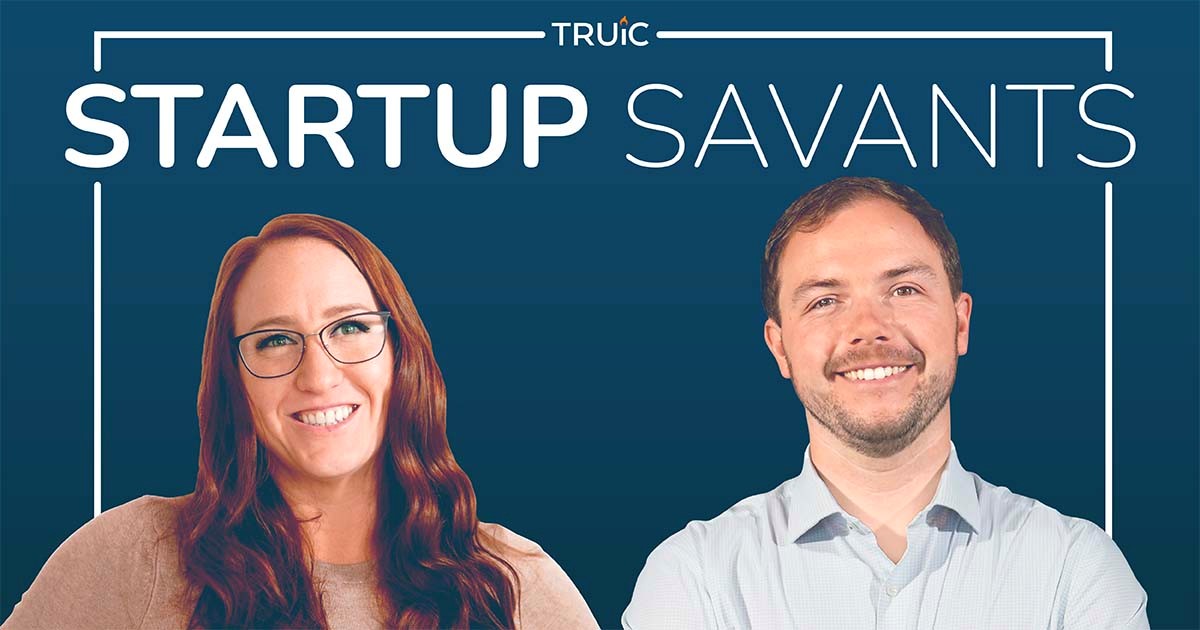This episode of Startup Savants features Ksenia Yudina, the founder of UNest. Her company is a fintech startup that offers an alternative to 529 college investment plans that’s easier to set up and gives parents more options for how to spend their money if their child doesn’t go to college.
Talking with podcast hosts Annaka and Ethan, Ksenia details why she started UNest and the unique advantages it offers. She also offers valuable advice for early-stage entrepreneurs.
Tell us about UNest, the problem it’s solving, and how it is solving that problem.
“UNest is a fintech app that makes it easier than ever before for parents to save and invest for their kids’ future and get gifts from friends and family … First, we make it super easy for parents to invest in their kids. And this process, historically, has been very challenging [and] time-consuming. It involved a lot of paperwork and, on average, took parents seven hours to complete. The second is we’re trying to make sure that kids that grow up and graduate into adult life 10, 15, 20 years from now, they’re not exposed to student debt or any type of debt, any type of financial obligations.
I graduated from UCLA Anderson with $180,000 in student loans. So the problem was near and dear to my heart. A lot of my friends were impacted, and I felt like the entire generation was suffering because of the student debt. Right now, it’s about $1.8 trillion. It’s pretty much a national disaster. That was my largest motivation.
The second thing [is that] I worked in the financial industry. Before starting UNest, I was at Capital Group, which is the number-one provider of 529s and UTMAs and other custodial accounts in the industry. And I was helping a lot of clients, high-net-worth individuals, start saving and investing for their children, but the process was super complex and painful for us as financial advisors and for the clients. It involved 16-page-long financial applications. We had to FedEx them for signatures, get them back, set up accounts on the back end.
I realized that a lot of my classmates and my friends who were millennial parents, they already used financial apps to manage all aspects of their lives. They used apps like Robinhood and Mint and Venmo, but there was nothing that existed to help parents to start saving and investing for their children, although, as a parent, I knew that children are the number one financial priority for parents.”
At what point were you like, ‘All right, enough of this financial advisor stuff. It’s me. I’m the one that’s got to do this’? How did you get to that point?
“The inspiration definitely came from my friends, first and foremost, because I got a lot of friends who reached out to me, knowing that I work in finance at Capital Group, and just asking for a simple solution to start saving for their kids because they were trying to make a difference and, for decades, to avoid the student debt that they were exposed to. And when I gave 30 friends a financial application from Capital Group, they did nothing. And I realized that I need to find a better way.”
Could you give us a primer on what a 529 plan is?
“A 529 account is an investment account that’s meant to help save for education. It’s tax-free, which is great, but the limitation is that you cannot use proceeds for anything outside of educational expenses, like college or books or computer equipment … That’s a big limitation for a lot of people because they feel like it’s too restrictive because if you use it for something else, you’re getting a penalty of 10% on all the gains and you lose tax advantages.
The reason we started with 529s was because … it was a great solution for high-net-worth individuals because of two reasons. First, they had a very high probability of the kids going to college, and they really wanted to save for college. And second, they were looking for a tax shelter.
When we started a product for everyone else, for people of all income levels, for all economic backgrounds, we realized … that people have different priorities for their children. Not everyone wants their children to go to college. Some people want to save for their first car or for the first house, or just for camp. There are so many different aspirations that parents have for their kids.”
So basically, you had people reaching out to you saying, ‘Hey, this is confusing. It’s not working for us’ — what’s the solution that you move to outside of that 529 plan?
“We moved to a different type of account. It’s called a UTMA or UTMA/UGMA, which is also a custodial account. It’s also tax-advantaged, and it’s an investment account, which is more flexible. So you can actually spend the proceeds for anything that benefits the child, not just education. It’s much easier. It’s federally sponsored. We have a great partner on the back end who’s helping us with all taxes, communication, all of that stuff, but it’s a much, much easier platform to manage.”
You mentioned in your company profile that fintech is a difficult industry to disrupt — can you tell us more about what you meant by that?
“Fintech is a regulated industry. First and foremost, when you start a company in fintech, you need to make sure that you meet compliance and regulations. So, for example, UNest is an entity that’s regulated by the SEC and by FINRA. We are the financial advisor, and we are the broker-dealer. It’s very hard to disrupt, but it also creates a lot of barriers to entry for new entrants.
To become a broker-dealer, it took us 10 months and over $300,000 to get to that setup. And compared to tech companies, in addition to some of the same challenges that we experience, we also need to know things like KYC and AML. Know your client and the money laundering rules to make sure that users who are on board meet a lot of criteria, and we can actually open the investment accounts for them.”
Were there any other major roadblocks that you ran into when you first got into starting UNest?
“There were so many roadblocks, but I would say the biggest one was disrupting the industry. When we started with 529s, we met so much resistance from the industry. They were not ready for it. The entire 529 industry collectively said, ‘We don’t want to use APIs, we don’t want to deal with startups, we don’t want to do things electronically. We prefer faxes and … we prefer paperwork.’
It’s a very tight industry. They all talk to each other, they all go to the same events. And I’ve spoken to some founders that attempted to start companies in the same space. The reason they failed was because they just couldn’t break through this industry. So the first year was very challenging, and we had to change our back end … three or four times just to find the right partner. Because the minute you start scaling, the startups are meant to get to thousands or hundreds of thousands of users [and] that really scares those large financial institutions. We were at the point [in the] early days where we had to take two large financial institutions to court to fight.”
How did you navigate those big changes in direction while you were building out the app?
“A lot of help from the board, from advisors’ introduction. We were … facing the decision of, do we just want to pause the app and all the users that were trying to come into the app and maybe redirect people to the waiting list? [We] reached out to some advisors on board and they said, ‘Don’t pause. Just find another partner and keep growing because it’s great when you see so much demand for a solution. You need to satisfy this demand, and these things are normal.’ … And it gave me so much motivation to move forward and keep trying.”
So beginning to end, as far as building the app, how long did it take?
“For the MVP, it took us eight months. That’s not typical for fintech, though. I’ve spoken to other founders and founding teams. It typically takes two to two and a half years to build it if you want to be regulated and you want to do the broker-dealer from day one. We started with a shortcut where we became a registered financial advisor, but like I mentioned, on the back end, it wasn’t that slick. So to rebuild the back end took us another year.”
So how did you even plan out such a complex problem and solution?
“I started reaching out networks. First of all, I didn’t have any technical background. That was another challenge. I knew a lot about finance and about business, having MBA and CFA and working in the industry. I didn’t know anything about technology. So I started reaching out to network. I partnered up with Steve. Steve first became our tech advisor, and then he joined as a CTO once I raised the seed round. And we, together, came up with the first prototype.
We found a team that was able to do competitive research and understand the problem we’re solving and come up with a prototype of the app. And then, we found another team to actually build that prototype into the actual app. But for that, we had to streamline everything and get to the real MVP and remove all the nice-to-have features and really just understand what’s must-have for this solution to be live.”
So if I’m a person who has an idea and also does not have a technical background, how do I find my Steve?
“Network. Talk to as many people as possible, tell them about the idea and ask to make intros. And one intro will lead to another intro, and will lead to another intro, and, ultimately, you’ll meet someone.”
What are the strategies you’re using that ensure that you’re getting new users that are the right fit and are in it for the long haul?
“It starts at the top of the funnel, the marketing channels because we tried a variety of things, and I would say what brings the best quality of users with the great intention to stay there for a long time. If you tap into affiliate channels, for example, or influencers or referrals, people learn about you from trusted sources or from their friends, or from the celebrity that they follow. Those are the best type of users.
And then there are the more low-intention users, like programmatic channels or sometimes Facebook [and] Instagram can produce low-quality users. And then once you get people interested in the app, then engagement really matters, and additional value that you provide as a product. So that’s why, after launching the MVP, which just set up your account in five minutes, the next thing that we launched was the gifting feature.
So now, parents can receive gifts from their friends and family for Christmas and other holidays via electronic gifting. That became very popular during the pandemic when people couldn’t see each other in person. And in order to launch that feature, we actually had to acquire a different company called Littlefund and integrate with them.”
How did you go about building your affiliate program and finding the proper affiliates that were going to best suit your needs and that were going to be long-term partners?
“For the marketing, we used a mix of in-house and agencies. Things like affiliates and influencers, we actually outsource to the agencies that are expert in this. And we have several people in-house that are managing those agencies, but we have weekly check-ins to see who they’re targeting, to make sure it’s high-quality blogs, that they have a good incentive, it’s not just some coupon website that will bring some spam.”
You mentioned that you acquired a company called Kidfund. Can you just tell us more about that?
“We acquired two companies. One is Kidfund, and another one is Littlefund. They both were in this family-saving space. So the first acquisition of Littlefund happened in 2020, in the middle of the pandemic. The company couldn’t raise funds. It was a very challenging fundraising environment. We just closed our Series A round, and I got an email from one of our advisors who said, ‘Hey, I remember you wanted to launch this gifting feature. Are you still interested? Because I have this company that’s looking for an exit and, potentially, I can just connect you two to see if something is in there.’
He connected us, we spoke to co-founders, and we decided to acquire them. The company was pretty small. They had raised, at the time, maybe $1.4 million from investors. The team was maybe three or four people, and it was a very smooth acquisition. The value of the company was replaced with a convertible note that converted in our next round, and we gave the job offers to the team. It took us three and a half months to integrate the technology. It was actually pretty quick, and we launched it right in time for the holidays.”
Is this something that should be on the radar of all founders, or should most people just be out there saying, ‘We want this feature. I’m going to build it?’
“It really depends on what’s the value. And it can be opportunistic, and it can be strategic. For us, it was more opportunistic. We were not looking for the company to acquire. It’s just the macro environment was that way, and someone pinged us, and it was something on our roadmap. So for us, it was definitely easier to acquire versus build.
But for some other companies, it can be maybe they’re acquiring a UM or users or not just a specific piece of technology. I know that some companies at our stage also acquire talent, just to bring new employees. That said, there is one caveat that any acquisition is also destruction, and there can be some cultural clash or personality. Any founder needs to be very strategic and really understand the value and all pros and cons of the potential acquisition.”
Did you run into any of those culture clashes or personality problems? How did you manage it?
“For the first acquisition, we did run into one problem. We had to separate with one of the co-founders. Another co-founder stayed at the company, and he’s excellent. He’s still there. For some reason, he was a great match. And another co-founder, just, it wasn’t a fit. So we made the decision to separate.”
“When we acquired Kidfund, [there was] already a lesson learned that this can happen. So we were hedging our risks. So when we were acquiring Kidfund, I had a conversation with the CEO, and they said, ‘Look, it may work long term, it may not work long term. Let’s make a commitment to each other for six months that we will give it our best to transition and integrate the technology and integrate the team. But if it doesn’t work, no hard feelings, you’ll be thankful and you can move on with the next chapter.’ So next time, it was much, much easier.”
How is UNest funded, and what’s been your experience with that?
“We’re funded in a traditional way, by VCs. So we’re obviously a backed company. We closed Series B last year. So we closed seed, Series A, Series B. And we’re also backed by two large financial institutions. One is Northwestern Mutual, and another one is Franklin Templeton. In terms of the largest VCs on the cap table, we have Anthos — they’re one of the largest VCs in LA (huge supporter); they led our Series A round. We have Artemis. They actually support female entrepreneurs, three amazing women that run that fund. And we have some other venture funds, like Draper Dragon and then Unlock Ventures and several others.”
What’s the total amount that you’ve raised so far?
“$38 million.”
What made you choose to do partially debt instead of all equity?
“So that is non-dilutive capital, and I treat it as insurance. You don’t have to use it, but imagine we were closing our Series B in 2021 when the market was so hot, and you could pretty much raise any capital in the world. So we decided to raise $20 million in equity. We took $6 million in venture debt, just as insurance, just because, just in case.
And look where we are in 2022. So now, this venture debt comes very, very handy. If you want to extend your runway as a founder, it’s not so easy to get into the equity market. The capital is not so easy to access anymore. So I think, again, strategically, it’s just better to always plan for the worst-case scenario and that the wind can blow in a different direction next year and just protect and hedge your risk.”
When we first started chatting, [you said] the fintech space was not open to disruption — have you noticed the attitude changing in the last couple years?
“Our space was a little unique because the 529 industry didn’t want to change, and then they were not up for disruption. And I don’t think it has changed much since 2018. I think they’re still operating on faxes, for the most part, and they still don’t welcome startups. They still don’t want to develop APIs, which are essential for any fintech startup.”
“If you think about the bigger problem that we’re solving, we are not trying to disrupt 529s. We’re helping parents save and invest for their kids’ futures and help them build a brighter future for their children. And the solution can be different. We’re always trying to be focused on the problem. So that space is definitely getting much more interest from VCs and large financial institutions, especially as they’re trying to get to these younger consumers. Now, everyone’s trying to get to millennials and Gen Z, and they understand that we start building that relationship … when the child is just born, and we’re maintaining and building that relationship throughout every single age.”
Walk us through the trajectory from your first job, to financial advisor, to where you are now.
“My first serious job was in the mortgage industry. I was 18 years old. I got my real estate license as an agent, and then I started college. I went to CSUN to get my education in finance because I really like the finance part of the real estate business, or mortgage business, not so much the real estate part.
And then, I graduated in 2009 and really wanted to get into finance on Wall Street, into investment management. And, of course, I was in the middle of the financial crisis, and it was impossible to find a job with finance. So I had to pivot my career. I got my real estate broker’s license, and I started my own real estate company, just working with my friends, with my network, with my husband’s relatives, who became first clients, and I managed that for four years.
While I was doing that, I still was pursuing my passion for finance and investment management through education. I’m a very big believer in education. I believe it opens a lot of doors. So I started my MBA at UCLA Anderson, and I started my CFA in parallel. And then, after UCLA, after business school, I joined Capital Group, and I got into this financial advisory role, working in private wealth with high-net-worth individuals. And after four years there, I realized that now, I know how the industry works, I have enough knowledge, I’m probably the right person to solve this problem. And just given the feedback from my friends and family around the time, realizing this opportunity, I decided to start my own company.”
What skills or character traits do you think have helped you reach success?
“Never giving up. Resilience, I think, is the first one. Life is full of challenges. Startups are full of challenges. You need to be able to adjust and adapt and pivot and bounce back and become stronger from any challenge. And just being outgoing and not being afraid to ask questions and reach out to people, being humble. I think it takes a village to build a company.”
Did you have moments of doubt where you’re like, ‘Am I doing the right thing? Am I on the right path for what I want out of my life?’
“Yeah, a lot, I think like any founder. I think during the first 18 months, it was very challenging just because I was self-financing the company. I got some money from angel investors, but it wasn’t enough to scale. I really needed institutional money. It was hard to raise the first round of institutional capital. As a solo founder, female founder in fintech, first-time entrepreneur, it’s not easy. And stats that say, ‘Well, only 2% of venture capital goes to female founders,’ and I totally felt it.
And at some point, I was like, ‘Why did I give up my amazing job, great salary, the career benefits, all of that? And I’m subjecting my family to this risk of unknown or failure of maybe I’m not going to raise money.’ But I just kept moving. That’s why I’m thinking being resilient, not giving up is pretty much the first quality that any entrepreneur should have.”
How do you tell the difference between persisting to achieve your goal and, ‘Oh, maybe we should change the approach?’
Sometimes you can be stubborn, like, ‘It’s my way or highway.’ And being resilient and being able to adapt, it’s a little different because then you have Plan A, Plan B, and Plan C. So even during my seed round, on one hand, I was persistent and trying to get to my goal. But my goal was getting price round term sheet from lead VC, and then my Plan B was maybe it’s not a lead VC, and my Plan C was maybe it’s not the price round and I just do it on the convertible note, and my Plan D was maybe I just share the company with some experienced entrepreneur, and they help me raise money. So I had so many different scenarios, and I’m glad that one of the top choices worked out, but I was ready for something else, for a different outcome.
In your company profile, you’d mentioned that you had to learn how to say no. Why was this important to you, and how did you get to the point of being comfortable doing so?
“When you run a company, focus and keeping your priorities right are extremely important because you’re going to get pulled in so many different directions. And the time and energy … Time is precious. Time is the only big asset that you have as a founder, and how you allocate it may determine whether your company is successful or not. When you are an early-stage startup, you have to wear so many different hats. You’re not just the CEO, but you’re CTO and CCO and chief growth officer and whatnot. And if you don’t manage your time correctly, there is a high risk that you’re just going to burn out and run out of energy.
There are people that reach out, want your advice on things, and there are people that reach out that just want to catch up and talk. And it’s important to always be nice but also to understand whether this conversation will result in some great outcome for you or it’s just going to be a waste of time. I had to turn down a few advisory roles, for example, because I understand that. Now I’m at my capacity. As much as I would like to help early-stage founders, I just can’t take any more assignments.”
Tell us what’s new at UNest.
“The biggest news is that we just launched a crypto solution for families and officially became the first crypto for families. It just happened last week, and it’s been driven by a lot of demand from existing users. We’ve been building this feature for the past six months. We’re super excited, have a lot of demand, a lot of interest. The early metrics look amazing.”
What was the drive to get this feature up?
“The beauty of UNest platform is that we encourage long-term investing and long-term thinking. We are not here for day trading. We’re trying to stay away from the short-term noise. And people that generally join the platform, they’re here for the next 10, 15 years. They don’t think about last year versus this year. And a lot of people perceive this as a good buying opportunity. So, any downturn, what does it mean for investing that I’m buying at the dip? So I think it’s an exciting time to launch it.”
What is your number one piece of advice for early stage entrepreneurs?
“My number-one piece of advice: if you launch the company, get the right advisors on board, especially if it’s your first company. Don’t be greedy about your equity. I use my equity as a currency. Early days, I didn’t have much cash to motivate people and incentivize them to help the company, so I used equity. And then people really buy in, and they want you to succeed, and then they believe in the potential … Don’t be afraid to give up equity [in the] early days. Plus, you can always hedge your risks. I’m always a big believer in risk hedging by putting some vesting around this equity. So if you onboard someone as an advisor and they don’t perform, you can always cut that equity.”













